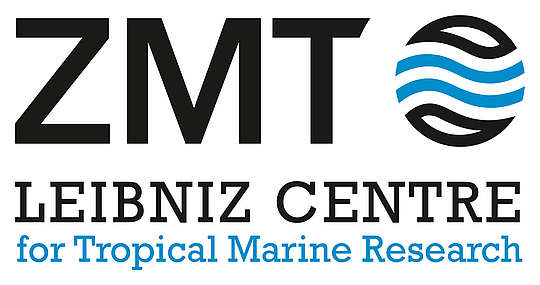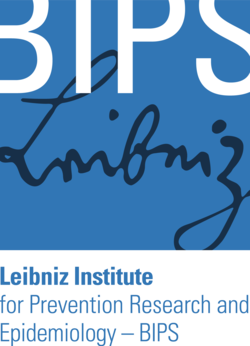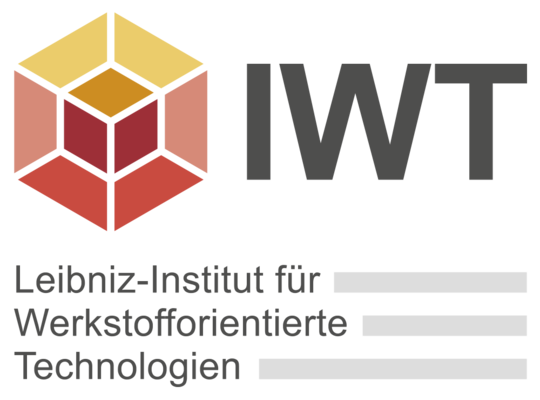
© Jens Lehmkühler / U Bremen Research Alliance
The Peer-to-Peer Network Artificial Intelligence is one of the activities in the lead project Artificial Intelligence. It provides experienced researchers in the U Bremen Research Alliance the opportunity to exchange ideas among each other, cooperate and use synergy effects with respect to AI topics. In particular the network shall connect AI research and AI application.
Network Meetings
The meetings of the Peer-to-Peer Network Artificial Intelligence take place every first Friday of the month from 12:00 to 13:30 and are open for experienced researchers of all members of the U Bremen Research Alliance. If you are interested, please contact the coordinators Dr. Monika Michaelis.
Dr. Hauke Brüning, Fraunhofer Institute for Manufacturing Technology and Advanced Materials IFAM

Institution/Function
Group Manager Digital and Cyber-Physical Systems, Fraunhofer Institute for Manufacturing Technology and Advanced Materials IFAM
Contact
hauke.bruening@ifam.fraunhofer.de
Website
What do I combine with the Peer-to-Peer Network AI? What is my motivation for participation?
The integration of digital methods into existing processes increases their added value and makes them sustainable in the future.
Research interest; Connection to the research field of Artificial Intelligence
As an employee at Fraunhofer, my focus is on the application of AI methods, particularly in the industrial environment. By using these methods, we can digitize previously repetitive, subjective-driven processes. The acceptance of these novel technologies by the executing employees is an important building block for an ever-growing field of application. A simple example, but one that is always relevant to us, is the optical visual inspection, which continues to be a central component of many processes today, both in small SMEs and in large-scale industry. Here, AI processes can often be put to excellent use, transforming the experience and knowledge of long-serving employees into a digitally usable, objective tool with much greater benefits. This is in no way about replacing humans with a purely technical solution. Rather, where-to-look approaches offer helpful ways of providing support so that people can focus on the essentials.
Dr. Arjun Chennu, Leibniz Centre for Tropical Marine Research

Institution/Function
Group leader, Data Science and Technology, Leibniz Centre for Tropical Marine Research - ZMT
Contact
arjun.chennu@leibniz-zmt.de
Website
ORCID: 0000-0002-0389-5589
What do I combine with the Peer-to-Peer Network AI? What is my motivation for participation?
The increasing velocity and volume of scientific data necessitates modern approaches to analysing and exploiting it. Artificial intelligence and data science techniques can provide useful tools, but increase the inter-disciplinary expertise required. The peer-to-peer network is a good way to have contextual exchange with other experts and institutes to develop perspectives and projects.
Research interest; Connection to the research field of Artificial Intelligence
Marine systems. Habitat mapping. Spectral imaging. Machine Learning. Numerical modeling. Microbial ecology. Scientific Diving. Underwater technology.
Prof. Dr. Stephan Frickenhaus, University of Bremen and Alfred Wegener Institute (AWI)

Institution/Function
Cooperation Professor AWI-University of Bremen (Faculty 3/ Centre for Industrial Mathematics) and Head of Computing and Data Centre, Alfred Wegener Institute (AWI), Bremerhaven
Contact
stephan.frickenhaus@awi.de
Website
ORCID: 0000-0002-0356-9791
What do I combine with the Peer-to-Peer Network AI? What is my motivation for participation?
I’d like to network on AI in the U Bremen Research Alliance, connecting AWI researchers and their topics with PIs from the University of Bremen, e.g., within the Data Science doctoral school MarDATA.
Research interest; Connection to the research field of Artificial Intelligence
My research, support and management topics are High Performance Computing, Data analytics and Data management in Earth system sciences. I engage in national initiatives NHR and NFDI, both, for AWI and the University of Bremen.
Dr. Daniel Kühn, German Research Center for Artificial Intelligence

Institution/Function
Project coordination & acquisition, German Research Center for Artificial Intelligence
Contact
daniel.kuehn@dfki.de
Website
What do I combine with the Peer-to-Peer Network AI? What is my motivation for participation?
Due to the increased use of robots in everyday life, our lives in the future will most likely look very different than they do today. AI will be an important and driving factor for robots.
Research interest; Connection to the research field of Artificial Intelligence
My area of interest includes the development and exploration of mobile, autonomous robots for exploration and exploration of unknown, unstructured, and dynamic environments on land and underwater. In addition to space robotics and maritime robotics, other application areas of particular interest to me include industrial production and logistics, search and rescue/security robotics, alternative and electric mobility, and medical robotics and rehabilitation robotics. Special focus of my research work is on system design, biologically inspired (distributed) control structures and mechanisms, simulation, and evaluation.
Dr. Dennis Küster, University of Bremen

Institution/Function
Science Manager in the high-profile area Minds, Media, Machines, University of Bremen
Contact
kuester@uni-bremen.de
Website
ORCID: 0000-0001-8992-5648
What do I combine with the Peer-to-Peer Network AI? What is my motivation for participation?
I am a Science Manager in the science focus Minds, Media, Machines and am therefore very interested in this network.
Research interest; Connection to the research field of Artificial Intelligence
My expertise includes experience in interdisciplinary research involving ICT and social robotics. My research interests revolve around the topic of emotions from a variety of angles, including: Psychophysiology of emotions, contextual and social factors influencing emotion expression, online self-presentation (avatars), affect sensing in Human-Robot-Interaction (HRI), expression of emotions in Human-Computer-Interaction (HCI), methods of emotion assessment, and emotion elicitation (e.g., images, videos, sounds, feedback). These types of studies frequently include validation experiments in the context of HRI/HCI, or the comparison of laboratory measures with new contact-free or wireless devices. Across these different types of topics, I study emotions from an appraisal perspective, and a common theme is the issue of how social context affects emotional processing at multiple levels.
Dr. Bianca Lassen-Schmidt, Fraunhofer Institute for Digital Medicine MEVIS

Institution/Function
Principal Researcher Pulmonary Image Analysis and AI, Fraunhofer Institute for Digital Medicine MEVIS
Contact
bianca.lassen@mevis.fraunhofer.de
Website
ORCID: 0000-0001-7888-9928
What do I combine with the Peer-to-Peer Network AI? What is my motivation for participation?
I like to think outside the box and appreciate the exchange with other disciplines. In the network, I look forward to exciting discussions.
Research interest; Connection to the research field of Artificial Intelligence
My research field is medical image processing, especially lung image analysis. Segmentation, detection and quantification of lung structures or pathologies has occupied me for many years. I am fascinated by medicine. I like to work application-oriented and interdisciplinary.
During my computer science studies in Bremen artificial intelligence was my focus, along with image processing. Today I actively drive the development of our collaborative AI tools at Fraunhofer MEVIS. I am interested in the whole process chain from data selection, efficient annotation, the actual training to data analysis. And of course, the scientific questions for which all the effort is worthwhile.
Dr. Felix Putze, University of Bremen

Institution/Funktion
Postdoc/Senior Researcher, Cognitive Systems Lab, University of Bremen
Kontakt
felix.putze@uni-bremen.de
Website
ORCID: 0000-0001-5203-8797
What do I combine with the Peer-to-Peer Network AI? What is my motivation for participation?
In the peer-to-peer network, I expect to have inspiring discussions on cross-cutting methodological topics, like algorithms for explainable AI. Furthermore, I am also looking forward to interdisciplinary exchange, ideally leading to new joint research projects.
Research interest; Connection to the research field of Artificial Intelligence
I engage in the use of AI methods for modeling of human cognition. For this purpose, I use methods of machine learning to classify user states from multimodal data. One example of such modeling is the discrimination of different attentional states from EEG and eye tracking fused through a neural network. I combine this approach with methods of cognitive modeling, which comprise formalized and computational theories from cognitive psychology, and which complement data-driven models with a-priori knowledge and context information. I combine both modeling approaches for the development of adaptive user interfaces which take the current user state into account, as well as for addressing basic psychological research questions.
Prof. Dr.-Ing. Tanja Schultz, University of Bremen

Institution/Function
Professor of "Cognitive Systems", Faculty 3 Computer Science/Mathematics, University of Bremen; Speaker of the high-profile area Minds, Media, Machines; Member of Board of Directors for the Leibniz Science Campus on "Digital Public Health"; Fellow of the International Speech Communcation Association, the European Academy of Sciences and Arts and IEEE
Contact
tanja.schultz@uni-bremen.de
Website
ORCID: 0000-0002-9809-7028
What do I combine with the Peer-to-Peer Network AI? What is my motivation for participation?
I am one of the three spokespersons of the KI-network.
Research interest; Connection to the research field of Artificial Intelligence
Dr.-Ing. Markus Wenzel,Fraunhofer Institute for Digital Medicine MEVIS

Institution/Function
Key Scientist Cognitive Computing/Computational Breast Care; Chair Integrative Clinical Decision Support, Fraunhofer Institute for Digital Medicine MEVIS
Contact
markus.wenzel@mevis.fraunhofer.de
Website
What do I combine with the Peer-to-Peer Network AI? What is my motivation for participation?
Many pressing clinical problems can only be tackled using interdisciplinary approaches. This motivates me, a computer scientist, to seek interaction with users and clinicians, but also to connect with experts from other technical disciplines. I’m convinced that exchanging ideas and cross-pollinate each other in a research community are the key ingredient to advance our field.
Research interest; Connection to the research field of Artificial Intelligence
Machine/Deep Learning, Causal Inference, Image and Video Analysis, Real World Data Analysis.
Dr.-Ing. Christian Werner, Leibniz Institute for Materials Engineering - IWT

Institution/Function
Senior Research Fellow Lightweight Materials/Additive Manufacturing, Leibniz Institute for Materials Engineering - IWT
Contact
werner@iwt-bremen.de
Website
What do I combine with the Peer-to-Peer Network AI? What is my motivation for participation?
How and in which issues of manufacturing and materials engineering can AI be effectively applied?
Research interest; Connection to the research field of Artificial Intelligence
Metal powder based laser additive manufacturing (LPBF) opens up new constructive lightweight designs by topology optimization. This macroscopic level is currently the focus of industrial interest, while the microstructural properties must be as isotropic as possible. However, LPBF allows locally varying energy input, which means that the microstructural properties can be influenced in a targeted manner in order to induce locally specific properties in the material. It is therefore conceivable not only to realize a macroscopic force-flow-oriented design, but also a microstructural design. Thus, a "hybrid material" could be realized from an alloy, such as Ti6Al4V, which combines different properties through microstructural design. This requires a consideration of all process steps (in particular LPBF, heat treatment/hot isostatic pressing etc.), which makes it difficult to identify interrelationships. Furthermore, the laser additive process is thermally extremely complex when considered locally. Depending on the laser scan strategy, the individual positions are reheated many times, which initiates recrystallization processes that have hardly been investigated. It is difficult to derive cause-effect relationships from statistical experimental designs, since it is practically impossible to consider thermal conditions in terms of time. This requires new approaches to correlate in situ and ex situ data from different process steps.
Dr. Max Westphal, Fraunhofer Institute for Digital Medicine MEVIS

Institution/Function
Senior Research Scientist: Data Science & Biostatistics, Fraunhofer Institute for Digital Medicine MEVIS
Contact
max.westphal@mevis.fraunhofer.de
Website
ORCID: 0000-0002-8488-758X
What do I combine with the Peer-to-Peer Network AI? What is my motivation for participation?
To me, the peer-to-peer network provides the ideal foundation for networking and collaboration with other AI researchers in a pleasent and interdisciplinary environment.
Research interest; Connection to the research field of Artificial Intelligence
My research is focused on reliable machine learning (ML), particularly in the context of clinical decision support (CDS). Integrative CDS is a core business area of Fraunhofer MEVIS. I am involved in several associated research projects with the goal to develop and validate data-driven solutions that support clinical workflows in a meaningful way. For instance, we develop machine-learned models to predict surgery complications before they actually occur. Another recent focus is the application of causal inference methods to real-world data to extract new evidence with the aim to inform the adaptation of medical guidelines. In all applications it is important to create reliable and trustworthy ML solutions. We aim to do so by promoting transparant models which are also capable to adequately quantify uncertainty. In addition, a throughout evaluation supported by clinical experts is important to describe strengths but also limitations of the developed methods. I am looking forward to continue to investigate statistical methods and efficient study designs to promote a reliable evaluation of ML solutions in healthcare.
Dr. Volker Zöllmer, Fraunhofer Institute for Manufacturing Technology and Advanced Materials IFAM

Institution/Function
Head of Department „Smart Systems“, Fraunhofer Institute for Manufacturing Technology and Advanced Materials IFAM
Contact
volker.zoellmer@ifam.fraunhofer.de
Website
What do I combine with the Peer-to-Peer Network AI? What is my motivation for participation?
Exchange of complementary skills with the aim of creating added value in a cooperative manner.
Research interest; Connection to the research field of Artificial Intelligence
In materials research, we are increasingly developing material and processing data. The integration of (printed) sensors allow measuring of new and valuable data. The evaluation of these large amounts of data requires new methods of AI.
Speakers of the lead project Artificial Intelligence
Prof. Dr.-Ing. Horst Hahn, Fraunhofer Institute for Digital Medicine MEVIS
Prof. Dr. Frank Kirchner, German Research Center for Artificial Intelligence
Prof. Dr.-Ing. Tanja Schultz, University of Bremen
Coordinator of the lead project Artificial Intelligence
Dr. Monika Michaelis, U Bremen Research Alliance












